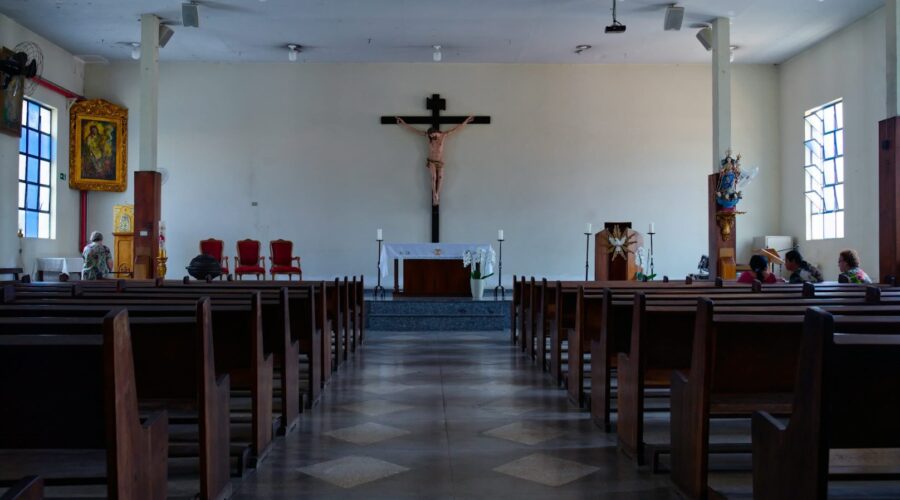Your cart is currently empty!
Explore the Majestic and Sacred: A Comprehensive Guide to Basilicas

Introduction
The term “basilica” is often used to refer to grand and architecturally significant churches, but what exactly is a basilica? This comprehensive guide delves into the world of basilicas, exploring their history, significance, and captivating architectural features. Read on to unveil the captivating story behind these sacred edifices.
Section 1: The Etymology and Historical Evolution of Basilicas
Origin and Early Significance
The term “basilica” has its roots in ancient Greece, where it referred to a large public building used for various purposes, including commerce and administration. During the Roman Empire, basilicas gradually evolved into judicial and legislative spaces, often featuring a central nave flanked by side aisles and a semi-circular apse at one end.
Transition to Religious Architecture
In the early days of Christianity, basilicas were adapted for religious use, particularly for gatherings and worship. The spacious interiors and basilica plan proved to be well-suited for accommodating large congregations and facilitating ceremonies. Constantine the Great’s establishment of Christianity as the official religion of the Roman Empire in the 4th century marked a significant turning point, leading to the construction of numerous Christian basilicas.
Section 2: Architectural Features of Basilicas
Plan and Layout
Traditional basilicas typically follow a rectangular plan with a central nave, the main passageway for worshipers, flanked by side aisles. Both the nave and aisles are often separated by rows of columns or arches. The apse, a semi-circular or polygonal projection at the eastern end, usually houses the altar and is a focal point of the basilica.
Elevation and Structure
Basilicas are characterized by their grand scale and impressive height. Vaults or coffered ceilings adorn the nave, rising above the side aisles. Arches and columns support the weight of the structure, creating a sense of spatial harmony and visual impact.
Decorative Elements
Mosaics, frescoes, and sculptures often adorn the walls and ceilings of basilicas, depicting religious scenes and figures. Stained glass windows bathe the interiors in vibrant hues, filtering natural light to create a sacred ambience.
Section 3: Types and Significance of Basilicas
Minor and Major Basilicas
The Catholic Church classifies basilicas into two categories: minor and major. Minor basilicas are granted the title by the Vatican and are recognized for their historical and architectural significance. Major basilicas are the most prestigious and are typically located in Rome or are associated with significant religious figures.
Papal Basilicas
Papal basilicas are the four major basilicas in Rome, each holding unique historical and religious importance:
- Basilica of St. Peter
- Basilica of St. John Lateran
- Basilica of St. Paul Outside the Walls
- Basilica of St. Mary Major
Patriarchal Basilicas
Patriarchal basilicas are located outside Rome and are associated with the patriarchates, the ancient centers of Christianity:
- Basilica of the Holy Sepulchre (Jerusalem)
- Basilica of the Nativity (Bethlehem)
- Basilica of St. Mark (Venice)
Section 4: Notable Basilicas Around the World
Europe
- Basilica of Santa Maria Maggiore (Rome, Italy)
- Hagia Sophia (Istanbul, Turkey)
- Notre Dame (Paris, France)
Asia
- Basilica of Bom Jesus (Goa, India)
- Basilica of the Sacred Heart (Manila, Philippines)
- St. Basil’s Cathedral (Moscow, Russia)
North America
- Basilica of the National Shrine of the Immaculate Conception (Washington, D.C., USA)
- Basilica of Our Lady of Guadalupe (Mexico City, Mexico)
- Basilica of Sainte-Anne-de-Beaupré (Quebec, Canada)
Conclusion
Basilicas stand as architectural masterpieces and sacred spaces, bearing witness to the rich history and traditions of Christianity. They are not merely buildings but symbols of faith, awe-inspiring structures that have captivated generations with their grandeur and spiritual significance. From their origins in ancient Greece to their enduring presence in the modern world, basilicas continue to inspire and uplift, serving as a testament to the enduring human quest for the divine.